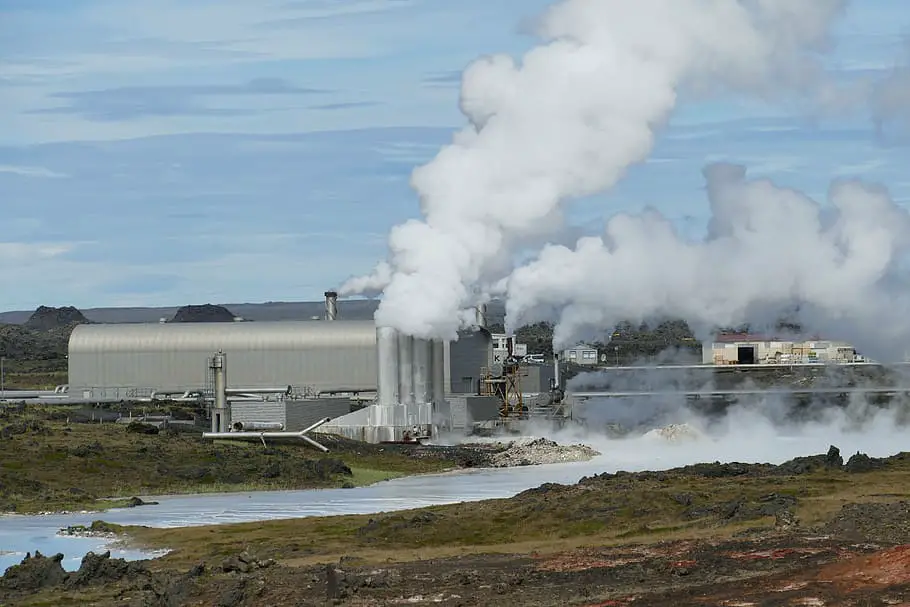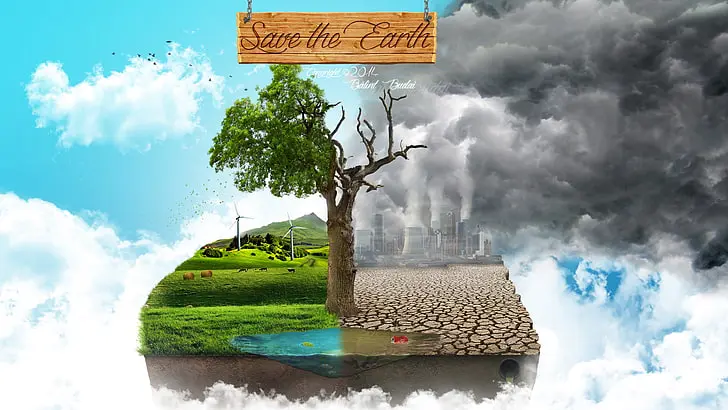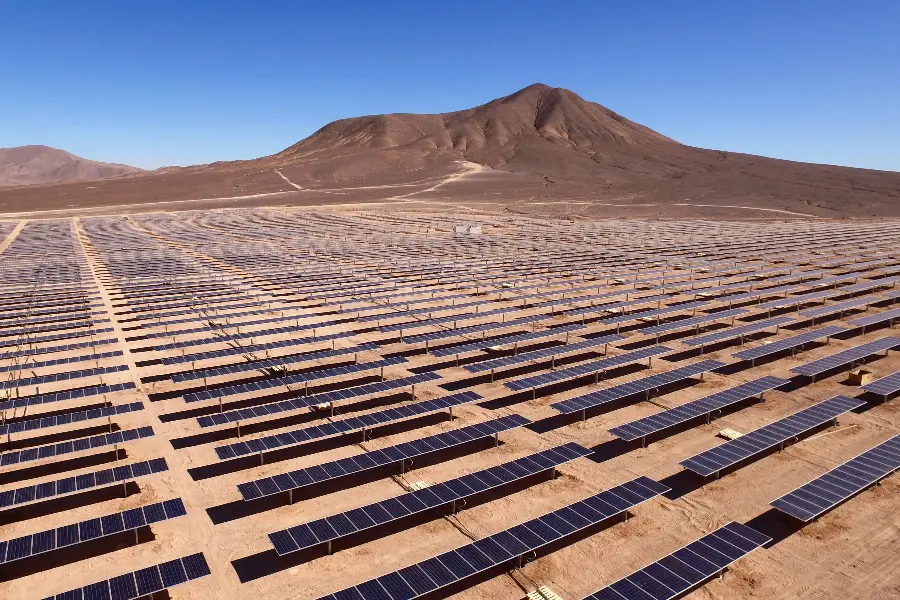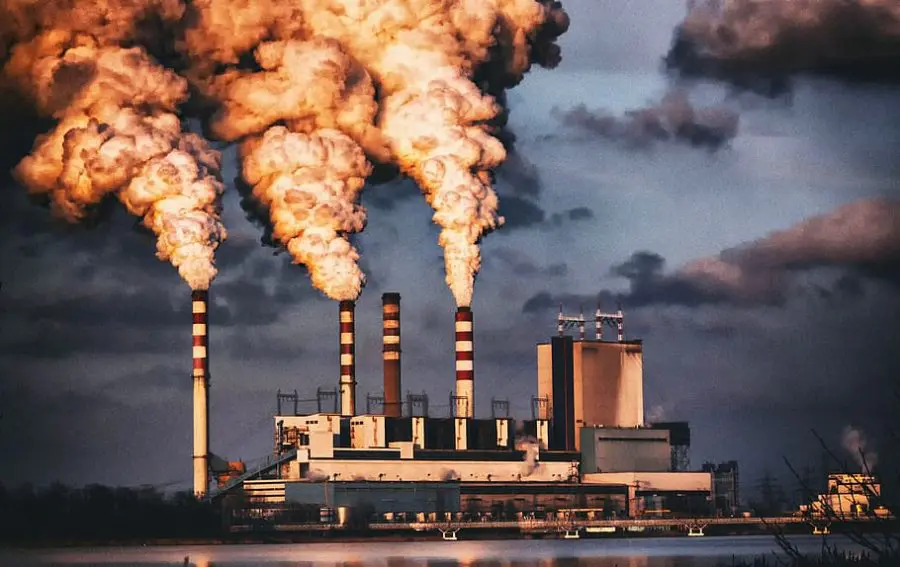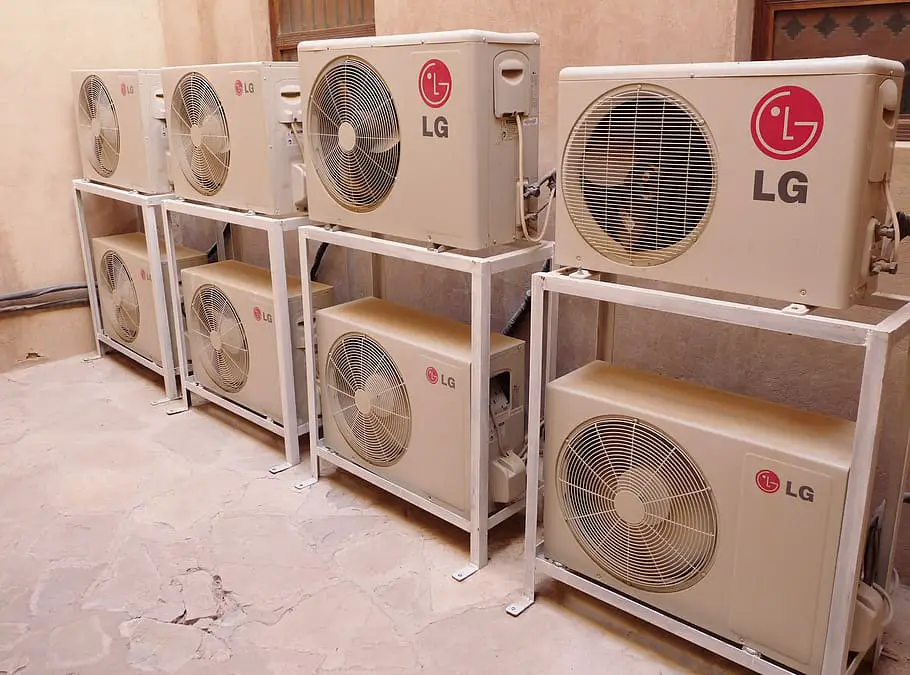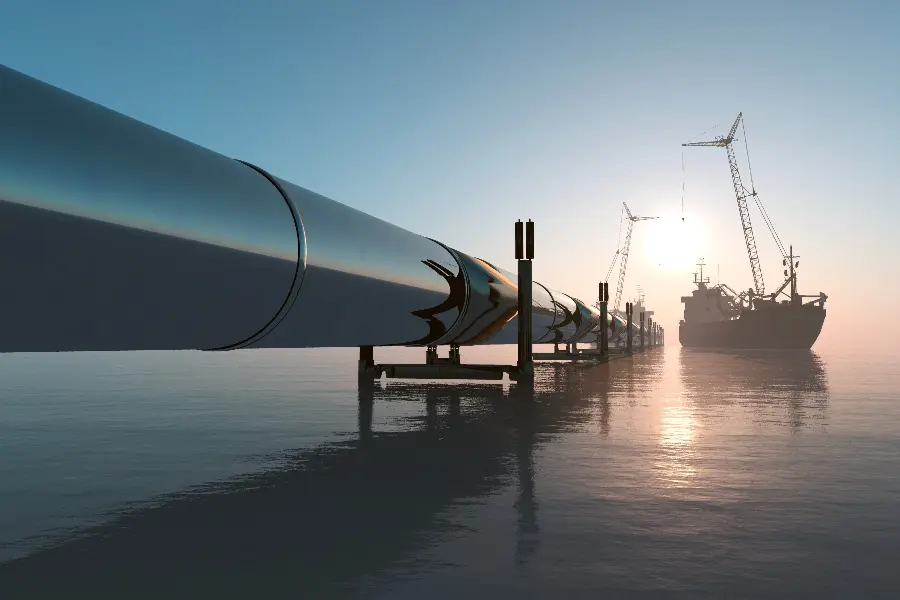
Let’s discover the truth and find out do pipelines cause pollution. Dive into our comprehensive guide exploring the environmental impact of pipelines.
Have you ever found yourself wondering, do pipelines cause pollution? It’s a question that’s been on the minds of many as we navigate through the complexities of our modern world.
In our quest for energy, pipelines have become a common sight, but what’s the real cost?
Let’s dive into this intriguing topic together, and explore the environmental impact of pipelines in a way that’s both engaging and easy to understand.
Join us as we unravel the truth behind pipelines and pollution.
Do Pipelines Cause Pollution?
Let’s embark on a journey today, a journey to answer the pressing question of do pipelines cause pollution.
It’s a topic that’s been stirring up discussions far and wide. In this post, we’ll be taking a close look at what pipelines are, how they work, and the impact they have on our environment.
We’ll also delve into some real-life case studies, explore the ongoing debate comparing pipelines to other forms of transport, and discuss the regulations in place to mitigate the pollution.
So, if you’ve ever pondered over the role of pipelines in our world, this post is just for you. Let’s dive in and uncover the facts together!
Brief Overview of the Topic
It’s fascinating, isn’t it? The way our world works, the intricate systems we’ve built to keep our lives running smoothly.
One such system is the network of pipelines that crisscross our landscapes. These pipelines, often hidden from view, play a crucial role in transporting oil, gas, and other substances across vast distances.
But as we’ve come to realize, there’s more to the story. The question that’s been making waves recently is do pipelines cause pollution?’ It’s a simple question, but the answer is far from straightforward.
Importance of Discussing Pipeline Pollution
Now, you might be wondering, why is it so important to discuss pipeline pollution. Well, the answer is simple yet profound.
The environment we live in is a delicate balance of ecosystems, and any disruption can have far-reaching consequences.
Pipelines, while essential for our energy needs, have the potential to disrupt this balance.
Leaks can lead to soil and water contamination, and the construction and maintenance of pipelines can impact wildlife and vegetation.
By discussing pipeline pollution, we’re not only raising awareness but also encouraging the search for safer, more sustainable alternatives.
It’s a conversation that holds the key to our future, and everyone should be a part of it.
What are Pipelines?
Alright, let’s get down to the basics. What exactly are pipelines? It’s a term we hear often, but do we really know what it means?
In the simplest terms, pipelines are like the veins of our industrial world. They transport vital substances like oil, gas, and more across cities, countries, and even continents.
But just like everything else in life, pipelines come in different shapes and sizes.
So, let’s delve a little deeper and get to know more about these hidden lifelines of our modern world.
Definition and Purpose of Pipelines
Pipelines, in the most basic sense, are long, cylindrical structures designed to transport substances from one place to another.
Think of them as a network of tubes, much like the veins in our body, carrying lifeblood to different parts.
But instead of blood, these pipelines transport oil, gas, and other essential materials.
The purpose of pipelines is simple yet vital. They provide a safe, efficient, and reliable means of transporting large quantities of substances over long distances.
From the gas that heats our homes to the oil that fuels our cars, pipelines play an integral role in our daily lives.
Types of Pipelines
Now, let’s talk about the different types of pipelines. Just like we have different roads for cars, bikes, and pedestrians, we have different pipelines for different substances.
Gas Pipelines: These are specifically designed to transport natural gas from extraction sites to areas where it’s needed, like our homes and industries.
Oil and Hazardous Liquid Pipelines: These pipelines carry crude oil, refined petroleum products, and other hazardous liquids across vast distances.
Gathering Pipelines: These are smaller pipelines that transport oil or gas from the extraction site to a central collection point.
Distribution Pipelines: These are the pipelines that deliver gas to our homes and businesses.
Each type of pipeline is designed to meet specific needs and follows certain regulations for safety and efficiency.
Understanding these types helps us appreciate the complexity and importance of the pipeline network that fuels our modern world.
How Pipelines Work
Have you ever wondered how the gas that heats your home or the petrol that fuels your car gets to you?
It’s a journey that’s often overlooked, but it’s quite fascinating. This journey is made possible by an intricate network of pipelines.
But how do these pipelines work? How do they manage to transport these substances over such long distances safely and efficiently?
Well, let’s pull back the curtain and take a peek at the inner workings of these pipelines.
It’s a bit like understanding the secret life of our roads and highways, but instead of cars and trucks, we have oil and gas zipping along beneath our feet.
Basic Operation of Pipelines
Let’s start with the basics. How do pipelines operate? Well, it’s a process that’s both simple and complex.
At its core, a pipeline transports substances from point A to point B. This is achieved by maintaining a pressure difference between the two ends.
The substance (let’s say oil or gas) is pumped into the pipeline at the source (point A). The pressure propels the substance through the pipeline, all the way to its destination (point B).
It’s a bit like how water flows from a higher level to a lower level, except that in this case, the ‘flow’ is maintained by pressure and not gravity.
Pipeline Infrastructure and Components
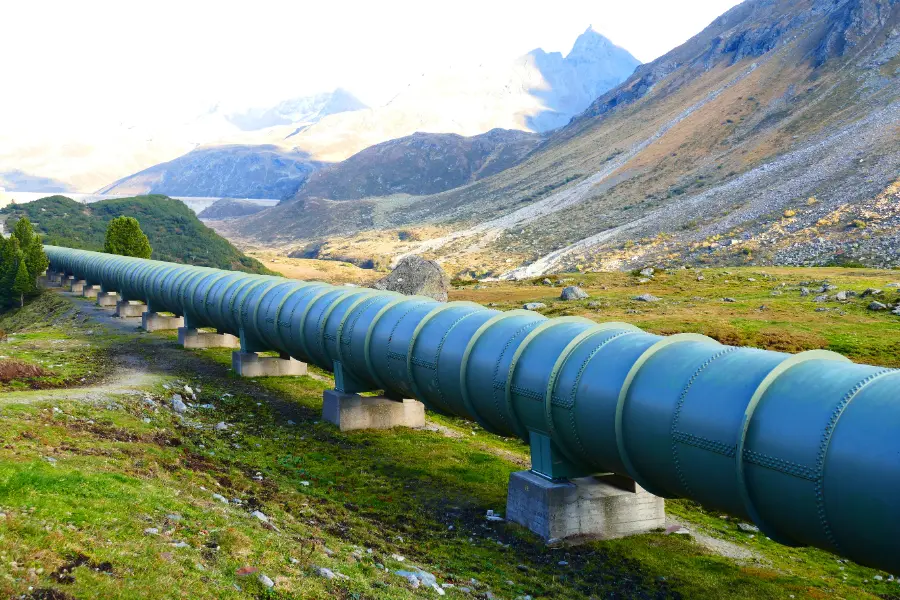
Now, let’s take a closer look at the infrastructure and components of a pipeline.
A pipeline system is more than just a long tube. It’s a complex network that includes various components, each playing a crucial role in the system’s operation.
Pipes: These are the main components that carry the substance. They are usually made of steel or plastic and can range in diameter from a few inches to over 40 inches.
Pumping Stations: These are facilities located at intervals along the pipeline. They house the pumps that maintain the pressure in the pipeline, ensuring the continuous flow of the substance.
Valves: These are devices installed at intervals along the pipeline. They can be opened or closed to control the flow of the substance.
In case of an emergency, they can be used to isolate sections of the pipeline.
Control Center: This is the nerve center of the pipeline system. It monitors the entire pipeline network, controlling the flow and pressure, and responding to any emergencies.
Understanding these components and how they work together gives us a deeper appreciation of the complexity and efficiency of pipeline systems.
It’s a marvel of engineering that keeps our modern world running smoothly.
Environmental Impact of Pipelines
Now that we’ve got a good grasp on what pipelines are and how they work, let’s delve into a topic that’s been making headlines namely the environmental impact of pipelines.
It’s a subject that’s as complex as it is important. As we’ve come to rely more and more on pipelines for our energy needs, we’ve also had to face the environmental consequences that come with them.
From air pollution to soil contamination, the impact of pipelines on our environment is a multifaceted issue.
So, let’s roll up our sleeves and dive into the nitty-gritty of how pipelines affect our precious planet.
Air Pollution Caused by Pipelines
When we think of air pollution, we often picture smokestacks or car exhaust.
But did you know pipelines also contribute to air pollution? During the extraction, transportation, and processing of oil and gas, various pollutants are released into the air.
These include methane, a potent greenhouse gas, and volatile organic compounds, which can contribute to the formation of smog.
Additionally, the construction and maintenance of pipelines can lead to dust and particulate matter being released into the air, affecting air quality.
Soil Contamination Due to Pipeline Leaks
Next up, let’s talk about soil contamination. Pipelines, like any other infrastructure, are not immune to wear and tear.
Over time, leaks can occur, releasing oil or gas into the surrounding soil.
This can lead to the contamination of the soil, affecting its quality and health.
In severe cases, it can render the land unsuitable for agriculture or other uses.
It’s a bit like a slow poison, seeping into the earth and disrupting the natural balance.
Water Pollution Resulting from Pipeline Ruptures
Water is the source of life, but it can also be a victim of pipeline pollution.
Pipeline ruptures, though less common than leaks, can have devastating effects.
When a pipeline that crosses a river or stream ruptures, it can release large amounts of oil or gas into the water.
This can lead to the contamination of water bodies, affecting both the water quality and the aquatic life.
It’s a stark reminder of the interconnectedness of our ecosystems and the ripple effects of pollution.
Impact on Wildlife and Vegetation
Last but not least, let’s discuss the impact on wildlife and vegetation.
Pipelines often traverse through various habitats, including forests, wetlands, and grasslands.
The construction and maintenance of pipelines can lead to habitat destruction and fragmentation.
This can disrupt wildlife populations and affect biodiversity.
Additionally, in the event of a leak or rupture, the released oil or gas can harm local wildlife and vegetation, sometimes with long-lasting effects.
As we can see, the environmental impact of pipelines is a complex issue, touching upon various aspects of our environment.
It’s a reminder of the need for careful planning, stringent regulations, and constant monitoring to minimize these impacts.
Case Studies of Pipeline Pollution
Sometimes, the best way to understand a complex issue is through real-life examples.
So, let’s take a step back from the theory and dive into some case studies of pipeline pollution.
These stories from around the world bring to light the real-world impacts of pipeline leaks and ruptures.
They paint a vivid picture of the challenges we face and the importance of finding solutions.
So, grab a cup of coffee, settle in, and join us as we explore these eye-opening case studies on pipeline pollution.
Notable Pipeline Leaks and Their Environmental Impact
Let’s start with some notable examples of pipeline leaks. One that comes to mind is the 2010 Kalamazoo River oil spill in Michigan.
A pipeline operated by Enbridge Energy ruptured, spilling about a million gallons of crude oil into the river.
The cleanup took years and cost over a billion dollars, making it one of the most expensive onshore oil spills in U.S. history.
The spill had a significant impact on the local environment, affecting wildlife and contaminating a large stretch of the river.
Another example is the 2013 Mayflower oil spill in Arkansas.
A pipeline owned by ExxonMobil ruptured, spilling an estimated 210,000 gallons of heavy crude oil into a residential area and local waterways.
The spill led to the evacuation of 22 homes and caused significant environmental damage.
These incidents highlight the potential environmental impact of pipeline leaks, affecting everything from local ecosystems to human communities.
Measures Taken to Mitigate Damage
In the wake of such incidents, various measures are taken to mitigate the damage.
This often involves a multi-pronged approach, tackling the immediate spill and the longer-term environmental impact.
In the immediate aftermath, efforts are focused on stopping the leak and cleaning up the spilled oil or gas.
This can involve a range of techniques, from physical removal to the use of chemical dispersants.
In the longer term, efforts are made to restore the affected environment.
This can involve cleaning and rehabilitating wildlife, replanting vegetation, and monitoring the recovery of the ecosystem.
In addition to these reactive measures, proactive steps are also crucial.
This includes regular inspection and maintenance of pipelines, the use of advanced technology to detect leaks early, and stringent regulations to ensure safety and environmental protection.
These measures, while not always able to fully undo the damage, play a crucial role in mitigating the impact of pipeline leaks and preventing future incidents.
The Debate: Pipelines vs. Other Forms of Transport

Let’s shift gears a bit and dive into a debate that’s been stirring up quite a bit of discussion, pipelines versus other forms of transport.
It’s a topic that’s as intriguing as it is important. While pipelines have their advantages, they also come with their own set of challenges, as we’ve seen.
So, how do they stack up against other forms of transport like trucks, trains, or ships?
Is one method better than the other, or is it not that simple? Let’s explore this debate together, weighing the pros and cons, and uncovering the nuances of this complex issue.
Comparison of Pipelines with Other Forms of Fuel Transport
When it comes to transporting fuel, there are several options, each with its own set of characteristics. Let’s take a look at how pipelines compare with other forms of transport.
Trucks: Trucks offer flexibility as they can deliver fuel directly to many locations, even those that are remote or hard to reach.
However, they have a lower capacity compared to pipelines and can be more prone to accidents.
Trains: Trains can carry large quantities of fuel and are more efficient than trucks.
However, like trucks, they can also be prone to accidents, and their routes are limited to railway lines.
We recently experienced a serious train derailment in East Palestine Ohio.
Recently a train carrying hazardous materials derailed close to Yellowstone National Park. Accidents do happen.
Ships: Ships are used for long-distance, large-scale transport of fuel, especially across oceans. They have a high capacity but can be affected by weather conditions and are also at risk of accidents.
Do you remember the Exxon Valdez oil spill in Alaska?
Pipelines: Pipelines offer a continuous, high-capacity method of transport.
They are generally more efficient and have a lower risk of accidents compared to trucks, trains, and ships.
However, they are fixed in place and can have significant environmental impacts, especially in the event of a leak or rupture.
Pros and Cons of Each Method
Each method of transport comes with its own set of pros and cons.
Trucks: Pros include flexibility and the ability to deliver directly to many locations.
Cons include lower capacity, higher risk of accidents, and higher emissions per unit of fuel transported.
Trains: Pros include higher capacity and efficiency compared to trucks.
Cons include the risk of accidents and the limitation of railway lines.
Ships: Pros include high capacity and suitability for long-distance transport.
Cons include vulnerability to weather conditions and the risk of accidents, which can lead to large-scale environmental damage.
Pipelines: Pros include high capacity, efficiency, and lower risk of accidents.
Cons include the potential for significant environmental damage in the event of a leak or rupture and the disruption caused by pipeline construction and maintenance.
In conclusion, while pipelines have clear advantages in terms of capacity and efficiency, they also pose significant environmental risks.
Balancing these pros and cons is a complex challenge that requires careful consideration and regulation.
Mitigation Measures and Regulations
As we’ve seen, pipelines, while crucial to our energy needs, come with their own set of challenges.
There are measures in place to mitigate these challenges and regulations to ensure that pipelines operate safely and responsibly.
It’s a bit like the rules of the road, guiding us toward a safer, more sustainable future.
So, let’s delve into these mitigation measures and regulations, understanding how they work and why they’re so important in the grand scheme of things.
Current Regulations on Pipeline Construction and Maintenance
Just like there are rules for building and maintaining roads, there are regulations in place for the construction and maintenance of pipelines.
These regulations are designed to ensure safety, protect the environment, and minimize the risk of leaks and ruptures.
In the United States, for example, the Pipeline and Hazardous Materials Safety Administration (PHMSA) sets standards for the design, construction, operation, and maintenance of pipelines.
These regulations cover everything from the materials used and the testing procedures to the frequency of inspections and the protocols for responding to leaks.
Technological Advancements to Prevent Pipeline Leaks
Technology plays a crucial role in preventing pipeline leaks.
Over the years, we’ve seen a range of technological advancements designed to detect and prevent leaks.
For instance, there are smart pigs, devices that travel inside the pipeline to inspect it for any signs of damage or corrosion.
There’s also leak detection software that monitors the flow and pressure in the pipeline and uses algorithms to detect any anomalies that could indicate a leak.
In addition, there are technologies for more accurate and efficient pipeline construction, such as advanced welding techniques and high-quality materials, which can reduce the risk of leaks in the first place.
Role of Government and Organizations in Regulating Pipelines
The government plays a key role in regulating pipelines. Government agencies set the regulations, oversee their implementation, and take action in case of non-compliance.
In addition to government agencies, there are also various organizations involved in pipeline regulation.
These include industry associations, which often develop standards and best practices for their members, and environmental organizations, which advocate for stricter regulations and monitor the industry’s environmental impact.
Together, these entities work towards ensuring that pipelines operate safely and responsibly, balancing our energy needs with the need to protect our environment.
Future of Pipelines and Sustainable Alternatives
As we journey further into the 21st century, the question on everyone’s mind is what does the future hold?
This is especially true when it comes to pipelines. With the growing awareness of their environmental impact, what does the future look like for pipelines?
And what about sustainable alternatives? Are there other ways we can meet our energy needs without causing harm to our planet?
It’s a fascinating topic, filled with possibilities and challenges. So, let’s take a leap into the future and explore what it might hold for pipelines and their sustainable alternatives.
The Role of Pipelines in the Future Energy Sector
As we look toward the future, it’s clear that pipelines will continue to play a significant role in the energy sector.
Despite the environmental challenges they pose, pipelines are still one of the most efficient and reliable methods of transporting large quantities of oil and gas.
However, the role of pipelines in the future will likely evolve.
As we become more aware of the environmental impact of fossil fuels, there’s a growing push towards cleaner, more sustainable energy sources.
This could lead to a shift in the types of substances transported by pipelines.
For instance, we could see an increase in the use of pipelines for transporting biofuels or hydrogen.
Furthermore, advancements in technology and stricter regulations could lead to safer, more environmentally friendly pipelines.
From improved leak detection systems to more durable materials, the pipelines of the future could look quite different from those of today.
Exploration of Sustainable and Less Polluting Alternatives
While pipelines are likely to remain a key part of our energy infrastructure, there’s also a growing interest in sustainable and less polluting alternatives.
One such alternative is renewable energy sources like wind, solar, and hydroelectric power.
These sources of energy don’t require extensive transport networks like pipelines, and they don’t produce harmful emissions or risk of spills.
Another alternative is improving the efficiency of our energy use. By using energy more efficiently, we can reduce the amount of oil and gas we need to transport, thereby reducing our reliance on pipelines.
Finally, there’s the potential for new technologies and innovations.
From advanced battery technology for storing renewable energy to new methods of producing and transporting hydrogen, the future of energy is full of exciting possibilities.
In conclusion, while pipelines will continue to play a role in our energy sector, the future also holds promise for more sustainable and less polluting alternatives.
It’s a future that requires innovation, collaboration, and a commitment to protecting our planet.
Do Pipelines Cause Pollution? FAQs
Alright, we’ve covered a lot of ground so far, haven’t we? But there’s always more to learn, especially when it comes to a topic as complex as pipelines and pollution.
That’s why we’ve put together this FAQ section. Here, we’ll tackle some of the most common questions people have about pipelines and their environmental impact.
So, whether you’re a seasoned expert or a curious newcomer, join us as we answer these burning questions and shed more light on this fascinating topic.
Q: Do pipelines contaminate water?
A: Yes, pipelines can contaminate water in the event of a leak or rupture.
If a pipeline carrying oil or gas ruptures, the substances can spill into nearby water bodies, leading to water pollution.
This can harm aquatic life and affect the quality of the water, making it unsafe for human consumption and other uses.
Q: Are natural gas pipelines bad for the environment?
A: While natural gas is often touted as a cleaner alternative to oil and coal, the pipelines used to transport it can still have environmental impacts.
These include the potential for leaks, which can release methane – a potent greenhouse gas – into the atmosphere.
Additionally, the construction and maintenance of natural gas pipelines can disrupt habitats and contribute to soil and water pollution.
Q: How do pipelines affect the atmosphere?
A: Pipelines can affect the atmosphere in several ways.
During the extraction, transportation, and processing of oil and gas, various pollutants can be released into the air.
These include methane and volatile organic compounds, which can contribute to climate change and the formation of smog.
Additionally, in the event of a leak, the released gas can contribute to greenhouse gas emissions.
Q: Do pipelines contribute to climate change?
A: Yes, pipelines can contribute to climate change. The extraction, transportation, and processing of oil and gas involve the release of greenhouse gases, including methane, which is a potent contributor to climate change.
Furthermore, leaks from pipelines can release these gases directly into the atmosphere.
Therefore, while pipelines themselves are not a source of greenhouse gases, the substances they transport and the potential for leaks mean they can contribute to climate change.
Do Pipelines Cause Pollution? Conclusion
Well, we’ve certainly been on quite a journey, haven’t we? From understanding what pipelines are and how they work to exploring their environmental impact and looking toward the future, we’ve delved deep into the world of pipelines.
But as with all good things, it’s time to wrap up our discussion. So, let’s take a moment to reflect on what we’ve learned, revisit the key points, and consider what it all means for our world.
Recap of the Main Points
Let’s take a moment to revisit the key points we’ve covered. We started by understanding what pipelines are and how they work.
We learned that pipelines are like the veins of our industrial world, transporting vital substances like oil and gas across vast distances.
We then delved into the environmental impact of pipelines, exploring how they can contribute to air pollution, soil contamination, water pollution, and impact wildlife and vegetation.
We looked at real-life case studies of pipeline pollution and discussed the ongoing debate comparing pipelines with other forms of transport.
We also explored the regulations and technological advancements in place to mitigate the environmental impact of pipelines.
And finally, we looked towards the future, discussing the role of pipelines in the future energy sector and exploring sustainable and less polluting alternatives.
Final Thoughts on the Impact of Pipelines on the Environment
As we wrap up our discussion, it’s clear that pipelines, while crucial to our energy needs, come with significant environmental challenges.
From the risk of leaks and ruptures to the disruption of habitats, the impact of pipelines on our environment is a complex issue that requires careful consideration and action.
However, it’s also clear that there are measures in place to mitigate these challenges, and there’s potential for further improvements through stricter regulations and technological advancements.
Moreover, the exploration of sustainable alternatives offers hope for a future where we can meet our energy needs without harming our planet.
In conclusion, while pipelines are a key part of our energy infrastructure, it’s crucial that we continue to strive for safer, more sustainable practices. After all, our planet is our home, and it’s up to us to protect it.

